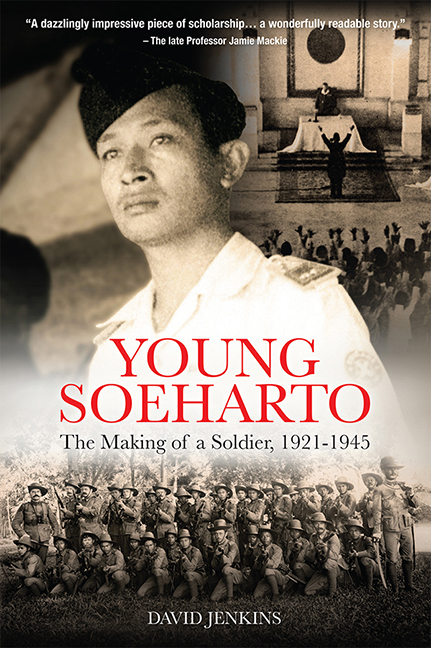Book contents
- Frontmatter
- Contents
- Foreword
- A Note on Spelling and Names
- A Note on Military Organization
- Maps
- List of Charts
- Preface
- Soeharto Family Tree
- 1 “The Sultan came to me and asked about that Family tree”
- 2 “The Cork on which the Netherlands Floats”
- 3 “They Regard Holland as a very Weak Power”
- 4 “An Invisible Motivating Force”
- 5 “What kind of Islam is this?”
- 6 “Soeharto is a Closed Book”
- 7 “I was Suited to the Disciplined life of the Military”
- 8 A Reassuringly Familiar World
- 9 A Policeman for the Japanese
- 10 An Armed Force Conjured out of Nothing
- 11 “The whole Island was Ablaze with Enthusiasm”
- 12 “Don’t make them too Strong!”
- 13 “Soeharto was a Cautious Man”
- 14 “Why did they Choose Soeharto?”
- Glossary and Abbreviations
- Notes
- Acknowledgements
- Bibliography
- Index
- About the Author
12 - “Don’t make them too Strong!”
Published online by Cambridge University Press: 09 October 2021
- Frontmatter
- Contents
- Foreword
- A Note on Spelling and Names
- A Note on Military Organization
- Maps
- List of Charts
- Preface
- Soeharto Family Tree
- 1 “The Sultan came to me and asked about that Family tree”
- 2 “The Cork on which the Netherlands Floats”
- 3 “They Regard Holland as a very Weak Power”
- 4 “An Invisible Motivating Force”
- 5 “What kind of Islam is this?”
- 6 “Soeharto is a Closed Book”
- 7 “I was Suited to the Disciplined life of the Military”
- 8 A Reassuringly Familiar World
- 9 A Policeman for the Japanese
- 10 An Armed Force Conjured out of Nothing
- 11 “The whole Island was Ablaze with Enthusiasm”
- 12 “Don’t make them too Strong!”
- 13 “Soeharto was a Cautious Man”
- 14 “Why did they Choose Soeharto?”
- Glossary and Abbreviations
- Notes
- Acknowledgements
- Bibliography
- Index
- About the Author
Summary
The Japanese entertained high hopes for the Peta, and General Harada travelled to Bogor to preside over the opening ceremony, which was held on Wednesday, 20 October 1943. This did not proceed quite as expected. The young men who were to be trained to lead an Indonesian volunteer force had been drawn up on the parade ground in the early hours of the morning, and as the general took his place on the reviewing stand they looked quite impressive. Their uniforms, which were modelled on those of the Japanese army but made from surplus KNIL cloth, consisted of a green tunic and jodhpurs and a brown leather belt. The prospective battalion commanders had high black boots. The others wore black shoes and black leather leggings. Some wore a Dutch ceremonial sword. All of this gave the Indonesians a superficial resemblance to Japanese officer cadets. It soon proved to be illusory. As Harada began his opening remarks, one of the Indonesian officer cadets fainted. He was followed by another and then another. Before long, cadets were falling like ninepins, even though it was barely 8:00 a.m. and the sun was still low in the sky. The Japanese looked on in dismay. “Everyone stood there in line,” Tsuchiya said, “and the commander-in-chief addressed them for about forty minutes. But he was only five minutes into his speech when officer cadets began to fall down, one after another. The commander-in-chief was so disappointed. Later he said to us, ‘Can this really be successful with such weak soldiers?’ Of course, we were all disappointed.” The recruits had succumbed to what the Japanese called nisshabyo (sunstroke). “It's more than fainting,” said Tsuchiya. “They were hardly alive. They were barely breathing.” Tsuchiya and his fellow officers wondered themselves if the Javanese and Sundanese cadets would be able to endure the severe training the Japanese had in store for them. “It was astonishing to us. We were surprised how weak they were. They weren't expected to do anything except stand.”
Despite the unpromising start, the Beppan officers were determined to make a success of the training programme. They knew they had too little time to give the cadets all the necessary technical skills.
- Type
- Chapter
- Information
- Young SoehartoThe Making of a Soldier, 1921–1945, pp. 237 - 264Publisher: ISEAS–Yusof Ishak InstitutePrint publication year: 2021

